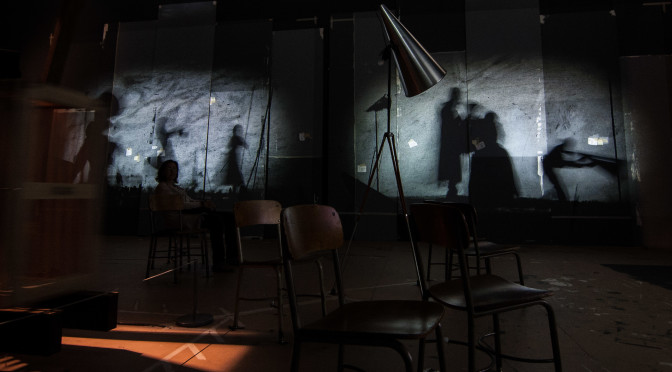You have a ‘good idea’ and want to start a community project. Good for you. Or maybe not. Here are ten things you need to know to keep the ‘unity’ in ‘community.’
I’m going to assume that you already know that leading a project in your neighbourhood is a yin-yang experience: equal parts pleasure and pain, cooperating with strangers and people you like and/or normally avoid at all costs, that even with a talented team, you will be the first to arrive, the last to leave, perform countless hours of invisible work, and at the end some boob will announce: “Well, that was easy!”
And I know you know how important it is to complete what you start and not leave it hanging in a zombie-like state of purgatory, and, to borrow from the Infinite Monkey Theorem, that ideas are a dime a dozen but people who can finish are worth their weight in gold, that starting small and building cred is critical but not sexy, and everyone wants a little sexy, right? And preferably right now.
So before you whip out your great big idea and start waving it around, here’s a dose of tough love for future community leaders.
1. The nature of an idea
In the beginning, an idea is just that: an idea. It remains words, a concept of limited use, until it has been thoroughly researched, documented, communicated, and assessed by the community it potentially serves.
Saying you’re going to do something isn’t enough to give you ownership of the idea. How often do people talk about what they’re going to do and not do it or, worse, not do it well?
Ideas provide an adrenaline rush with minimal effort. That’s why, in the beginning, they feel so good.
2. Feasibility of the idea
First, define your end goal and write it down. Ask a dozen random people to read it and verbally describe what they think you mean. Here’s a hint: You will be surprised by their answers. Rinse, rewrite and repeat.
Second, you need to quickly figure out whether the idea has legs over the longterm. An idea becomes a feasibility study before it can be (or not be) a project. The study will be modest or complex depending on the size and scope of the idea and will address the five w’s: who, what, where, when, why and provide informed, credible options on how to proceed.
The study seeks to understand community capacity for the potential project and, critically, ends with a ‘Go/no-go’ decision point that asks: “Does the idea have the appropriate people, skills, and resources to move forward as a project over the longterm? Is the timing right?”
3. Defining community support
Asking for support is an exercise in semantics. The purpose is to clarify precisely what people are being asked to support. It’s not enough to ask “Do I have your support?” or “What do you think of the idea?” If the goals and tangible benefits to the community have not been clearly defined BEFORE the idea proceeds to project form, it will be perpetually undermined by mistrust.
And if you have to beg or bully for support – volunteers or approval – then it’s a red flag that the idea is not feasible (and may never have been).
Ignore this step at your peril.

4. Understanding community capacity
Does your community have the capacity to manage the project? If you struggle to find volunteers to organize a potluck, fundraising dinner or community picnic you are highly unlikely to be successful with complex projects which require specific technical and business expertise. Stretch goals are good but it means the idea leader must be prepared to step up their game, to secure the appropriate level of resources before proceeding.
As the idea leader, you need to ask yourself the really tough questions: Am I the right person for the job? Is my presence making the project unpalatable to others, particularly high-performers? And, for goodness sakes, don’t berate the community for not meeting your personal expectations.
It may be ego-bruising, but It’s a positive, not a negative, to grasp the existing limits of community capacity.
5. Know when to fold ’em
There’s no shame in shutting down an idea or accepting that the timing may not be right. Setting a one year time frame for discovery is ample to assess community interest, capacity, leadership, financial potential and to draft a rudimentary, but useful, business plan. If the basics haven’t been crafted in this duration, chances are they never will. It’s time to enforce a ‘no go’ decision.
Allowing infeasible ideas to drag on – sometimes for years – chisels away at the unity of the community it is supposed to serve (see #10).
6. Attracting high-performing volunteers
Don’t expect the best and brightest in the community to drive your idea or project (that’s your job), especially when they are already driving other community endeavours. High-performing individuals have established interests and priorities and your project needs to excel across the board to attract (and keep) their attention.
A ‘good idea’ is not enough but strong, effective leadership may be.
7. Consultation and communication
Communicate to educate, engage and inform but don’t be a press or political whore, demanding attention for an idea that’s half-baked. Be modest because things can and will go wrong. Get some tangibles under your belt before leading a parade.
When you need public feedback produce a strawman proposal based on solid research so there is a basis for discussion. Asking people to attend a meeting to “gather ideas” willy-nilly, without proper structure or handouts, wastes their time and undermines your credibility.
Goodwill has a limited shelf life before people get frustrated or bored and tune out.
8. Funding is not the most important thing
The difference between a small and large volunteer project is complexity (more steps/dependencies) and size of budget. But the principles of effective leadership, communication, volunteer management, project planning and risk management remain the same and determine success. Financing is, of course, important but it doesn’t supersede all else. It’s easier to ask for (and receive) money when you’re knocking it out of the ballpark with superior research and documentation.
And speaking of money, don’t accept private or public funding before your project plan is solid. Arguably, it’s morally questionable and can create long-term problems for your community (see #10)
9. Leadership is hard, not glamorous, work
Which is why it’s (generally) easy to find volunteers to complete tasks but hard to find people to take the lead in a community project.
But if you deeply believe in what you’re doing, then you’ll be the one who bucks up, doing what needs to be done, learns new skills, reads everything you can get your hands on, becomes the subject matter expert, and refuses to take your eyes off the prize – the defined end goal.
You will definitely not be that person who hides in the cloakroom when it comes time to push a broom.
If it all seems a bit too much like work, then you’re better off saying ‘no’ than saying ‘yes’ and failing to work to completion.
10. Success matters
Project mishandling can leave a troubling legacy for a community project. Failure can sully a good idea rendering it unusable, leave financial messes for others to clean up, antagonize stakeholders, negatively impact community reputation, scare off volunteers and other resources, and create division within a community.
But you’re not going to be that person, are you?

One response to “So You Want to Lead a Community Project?”
[…] community projects and implement the concepts you’ve learned to achieve […]